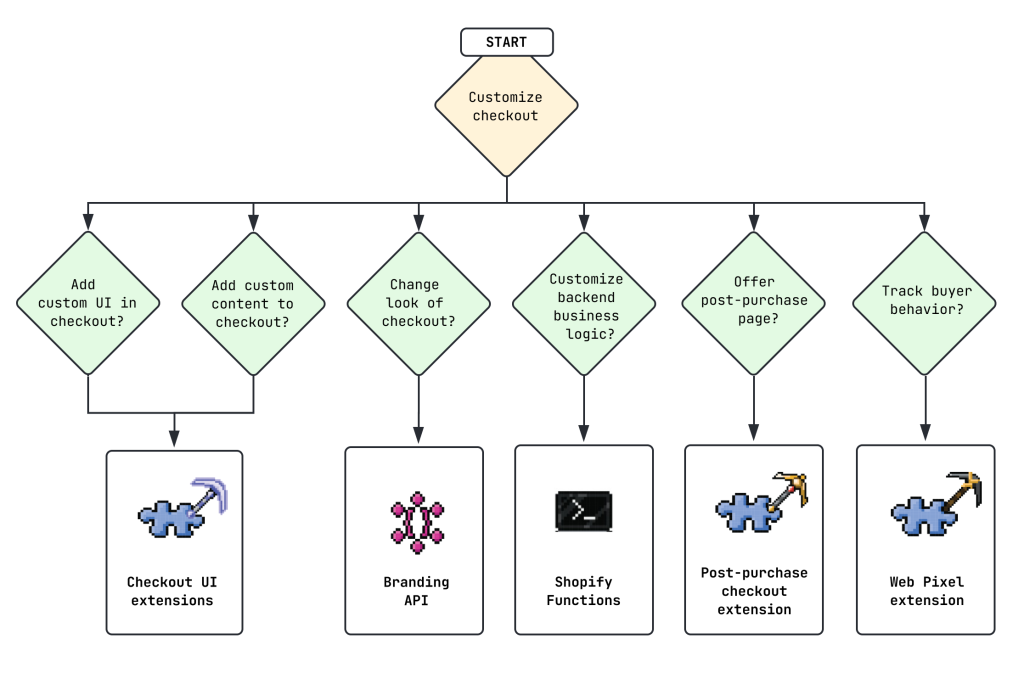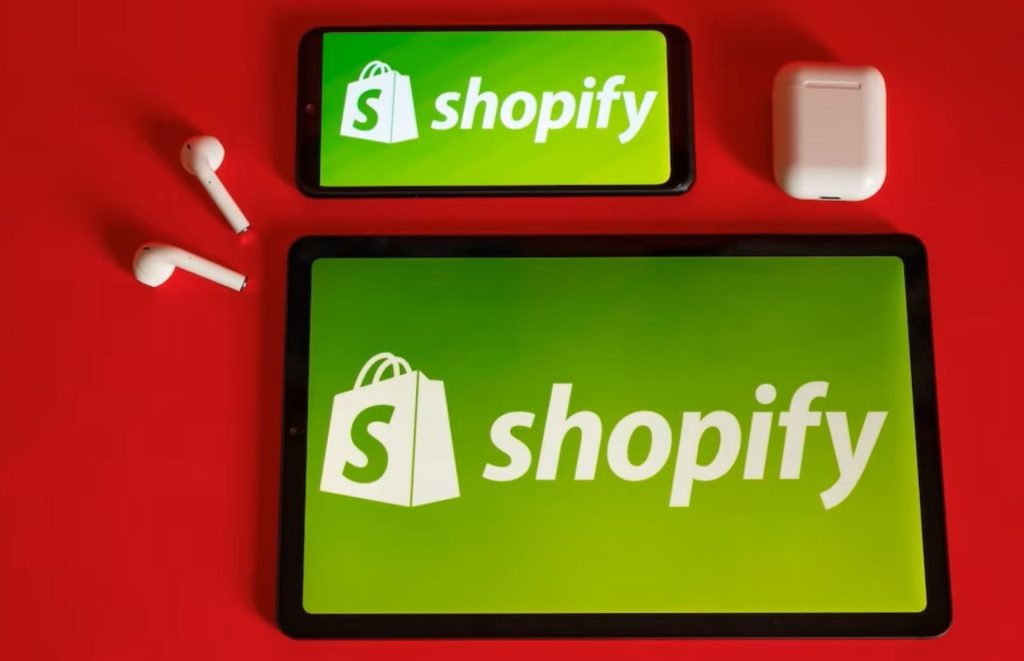Table of Content
- Adding a customised Shopify checkout
- Customization of the Shopify Checkout in the past
- The Modern Approach with Checkout Flexibility
- How it functions
- Does Checkout Extensibility represent the future?
- Wish to learn more? Or do you require assistance upgrading your checkout to checkout extensibility?
- Is Shopify Checkout Extensibility more advantageous than Shopify Checkout’s prior version?
- Shopify Checkout Extensibility FAQs
Adding a customised Shopify checkout
For online merchants of all sizes that want dependable, high-converting stores that are easy to operate, Shopify is a terrific platform. Customers have always had a good to acceptable experience at the Shopify checkout, but customization options have often been limited for companies. We have long viewed Shopify’s decision to lock the checkout with little room for customization and only partial customization available for Shopify Plus sites as a major error.
Customization of the Shopify Checkout in the past
With simple-to-use built-in features, Shopify checkout is optimised for speed and conversion from the outset for smaller retailers. This features straightforward procedures, regional payment alternatives, the choice of a quick checkout, and minimal branding options. However, when businesses expand, they can need more distinctive and sophisticated customizations as well as the capacity to test various checkout scenarios.
By engaging with a Shopify Plus Developer and asking access to the checkout.liquid theme file to alter the code directly, Shopify Plus brands were initially able to make a few restricted customizations for Shopify checkout. In addition to being time- and money-consuming, Checkout.liquid did not offer direct APIs for modifying Shopify Checkout. When trying to access new features without breaking these customizations, this commonly led to poor performance and the requirement for a developer to periodically (typically once per year) upgrade customised checkouts.What can be done is likewise severely constrained. For instance, the ability to design a one page checkout or at least to split test it was always necessary, but it was never feasible within the constraints of Shopify’s checkout. We found that frustrating because we know from testing in other scenarios that a one page checkout performs better. Shopify kind of left out the data on why that particular checkout they built was superior. in particular when hired to work on CRO for Shopify Plus stores.
The Shopify platform has now worked to give brands a quicker, safer method to configure checkout…without giving them the option to create a one page checkout unless they use Shopify Payments. Here, we believe Shopify has overlooked the demands of merchants once more and given priority to short-term profitability (they profit from Shopify payments) over the needs of enterprise merchants, which is, in our opinion, a false economics in the long run. If you don’t give the people what they want, someone else will.

The Modern Approach with Checkout Flexibility
Shopify has updated how checkout customization works by enabling the addition of app blocks in the checkout and expanding the potential for developers to create unique products for retailers. Once more, none of this, however, addresses the fundamental requirement to design single page checkout experiences and split test the key steps in your conversion process.
Unlike before, Shopify now offers apps and branding tools in place of altering code. Checkout.Liquid is losing value.
Shopify Plus brands can now easily alter checkouts without writing any code thanks to Checkout Extensibility. It is built on an app, simple to update, and works with Shop Pay. It also gives marketers the freedom to create the precise experiences they desire by allowing them to create their own apps utilising a variety of components. This provides Shopify developers some flexibility, but it’s not really what merchants want, in my opinion. Our impression is that Shopify is trying to make money off the checkout rather than providing customers with what they require.
How it functions
For the first time, Shopify is enabling developers to publish bespoke or open-source checkout customizations on the Shopify App Store.
The Shopify checkout UI extensions make it possible to add extras like personalised content, fields, product offers, loyalty programmes, and more. The appearance of the extensions during guest checkout and Shop Pay also gives customers a unified brand experience regardless of where they choose to check out. Additionally, the checkout UI automatically adjusts to the different checkout flows. We can therefore notice benefits, even if most of these tasks could be completed earlier and distributed relatively rapidly with some custom code.
Functions for controlling Shopify’s server-side business logic for customising discounts on orders, products, or shipping are another aspect of the extensibility of Shopify. However, it is still unclear how this is superior to the Scripts app. Additionally, you can create apps specifically for Shopify checkout.
In order to tie everything together, individuals who don’t want to work with Shopify developers can benefit from some advanced customizations thanks to the new checkout extensibility. Without hiring a Shopify developer, brands may customise their checkout to match their website by altering the colours, fonts, favicon, customising the corner radius on any button, and adding elements like upsells. However, don’t take it to mean that you have more control; in fact, it can be less depending on your requirements. At Liquify, we want to see a fully open checkout since it will enable us to test what our brands and merchants need.
We’re still sceptics. This is not a fully open checkout sequence, and it leaves a lot to be desired for business clients. If Shopify employees are reading this, they should know that a single page checkout experience and split testing have always been essential. This fundamental prerequisite for extensibility is missing. We have the option to use a single page checkout with Shopify payments only, and we could potentially bloat the most crucial pages with apps (which is how things are typically done on Shopify). Improvements in speed are welcome because checkout pages might be slow.
Does Checkout Extensibility represent the future?
Checkout extensibility will eventually need to take the place of checkout.liquid. Checkout extensibility may result in a quicker checkout process, however this will rely on the deployed apps. Since apps typically result in slow pageload times, we’ll have to wait and see what the overall impact is. Contrary to the previous method of customising a Shopify checkout, which may be less secure (although the worst that could happen is some customer data leakage and not payment data), the UI components and APIs run in a sandboxed environment that provides brands with additional security.
Currently, the information, shipping, and payment pages of the checkout process are included in the scope of Checkout Extensibility. The former checkout.liquid is deprecated and will no longer function for in-checkout pages after August 13th 2024 as a fun and secure method to customise Shopify checkout.
After this date, any Shopify Plus brands who utilise checkout.liquid will have to upgrade to Checkout Extensibility. Additionally, we are actively developing new checkout processes for Shopify pLus users.
Wish to learn more? Or do you require assistance upgrading your
checkout to checkout extensibility?
Want to learn more or begin customising? Get in touch with our helpful staff so they can assist you in creating and growing your Shopify Plus store. Our Shopify Plus developers are among the best in their field, and customers wishing to scale on Shopify Plus will benefit greatly from our full-service premium retainers, which include all services.

Is Shopify Checkout Extensibility more advantageous than Shopify Checkout’s prior version?
The previous Shopify Checkout experience is still incredibly fast and responsive, but it does not offer simple custom settings with apps. We are unable to see the advantages of checkout extensibility, but we are hopeful that it is merely the first of many changes that will provide the checkout flow greater control.
Shopify claims that Checkout Extensibility makes it simpler for in-house teams or developers to customise more, without the complicated labour, as opposed to changing the checkout code directly like before, which costs time and money. But as you use it, you’ll discover that a Shopify Plus Expert is required to apply sophisticated branding. With the Shopify checkout expansion functionality, we are cautiously running split tests and aren’t yet convinced of its advantages.
Shopify Checkout Extensibility FAQs
1: How may Shopify Checkout Extensibility be used?
The ability to alter and expand the functionality of the Shopify checkout process is referred to as extensibility. It enables programmers to change the checkout process and incorporate unique features like extra payment gateways, delivery choices, order processing logic, and more.
2: How can I make the Shopify checkout procedure longer?
The Shopify checkout process can be lengthened in a few different ways. The main technique involves leveraging the Shopify App Development platform to create a unique Shopify app. To alter the functionality and presentation of the checkout, you can build an application that interfaces with the Shopify Checkout API. You can also use third-party programmes and services that offer already installed integrations and extensions for Shopify checkout.
3: Who is eligible to utilise the Shopify Checkout Extensibility?
Currently, only Shopify Plus accounts can access Shopify Checkout Extensibility.

